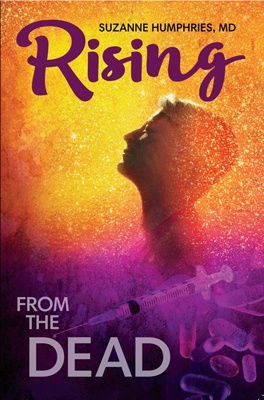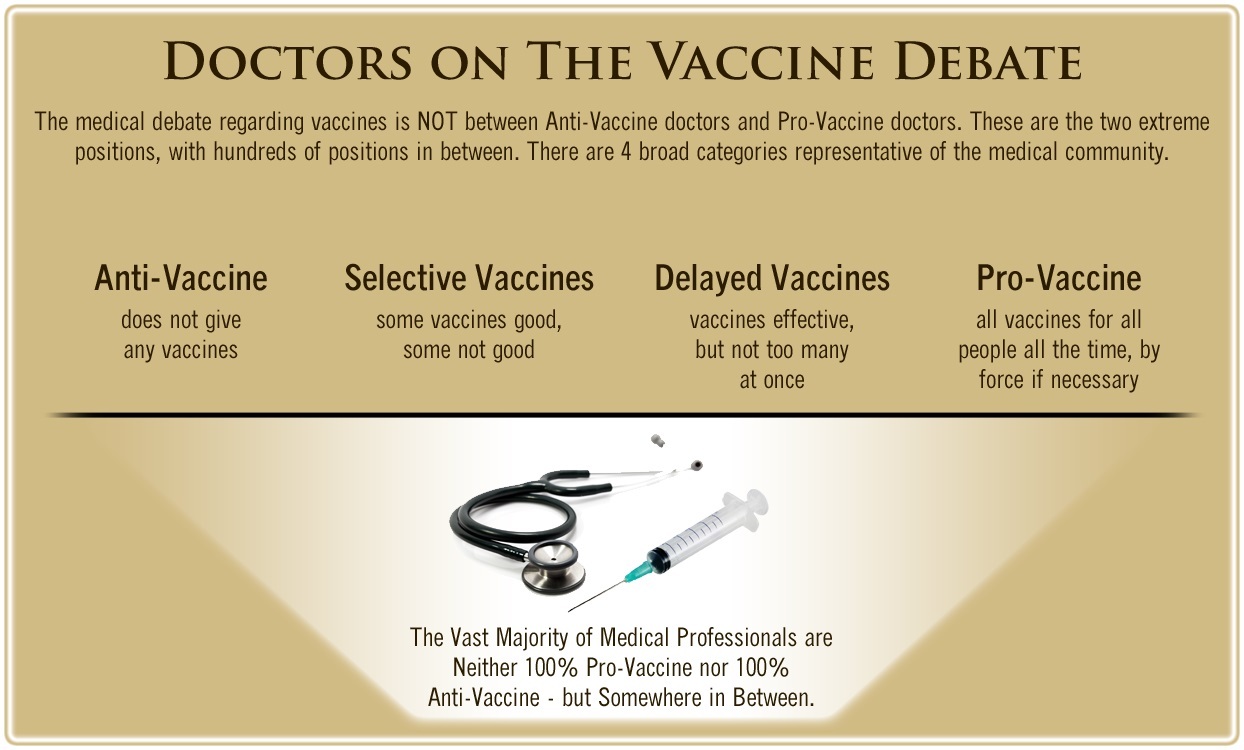by Barbara Loe Fisher
National Vaccine Information Center
Do you know how to recognize a vaccine reaction?
Like with prescription drugs and other pharmaceutical products, reactions to vaccines can be mild or severe. There can be complete recovery or long lasting health problems after vaccine reactions.
Rarely, vaccine reactions can be fatal. [1] [2]
If you are making a decision about vaccination for yourself or your child, it is important to first become fully informed about each vaccine’s reported side effects, precautions and contraindications, which means reasons for why a person may be at risk for having a serious reaction. [3] [4]
It is especially important for parents to become informed about vaccine complications and how to recognize the symptoms of a vaccine reaction. [5]
When a person collapses within seconds, minutes or hours of vaccination, it may be anaphylactic shock – a life threatening allergic reaction like can happen after bee stings, or exposure to certain drugs, chemicals or foods like peanuts. [6] [7]
Signs of anaphylaxis include problems with breathing and swallowing, wheezing, chest or abdominal pain, vomiting, diarrhea, hives and rashes, swelling, weakness, mental confusion and loss of consciousness.
Depending upon the vaccine, most vaccine reactions take longer than a few minutes to develop.
For example, brain inflammation reactions to pertussis (whooping cough) vaccine in the DPT or DTaP shots usually occur within 72 hours or a week of vaccination, [8] while it may take between one and two weeks for signs of brain inflammation to develop after getting live virus measles, mumps and rubella vaccine. [9]
There should be careful monitoring of signs and symptoms of vaccine reactions for at least a week or two after vaccination. Look for symptoms like:
- High fever (over 103F);
- Skin redness or discoloration, swelling or hardened lump and pain at the site of the injection; [10] [11] [12]
- High pitched screaming, which is shrill inconsolable crying by babies that lasts for hours [13] [14]
- Collapse/Shock, which is known as a hypotonic/hyporesponsive episode, when a child suddenly goes limp and may have pale skin or blue tinged lips [15]
- Excessive sleepiness, when a child sleeps deeply for an unusually long period of time and does not wake to eat
- Convulsion, also known as a seizure, which may include rolling of eyes, blank staring for long periods, twitching, trembling, shaking, stiffness and jerking of the body [16] [17] [18] [19] [20]
- Brain inflammation, also known as encephalitis or encephalopathy, is the most serious vaccine complication. Depending upon the age, symptoms can include agitation, high-pitched screaming with arching of the back or inconsolable crying, convulsions, muscle weakness, paralysis, double vision, slurred speech, mental confusion and unconsciousness. [21] [22] [23] [24] [25] [26] [27]
- Behavior Changes and Mental or Physical Regression after vaccination can be signs of brain or immune system damage, such as loss of muscle control and developmental milestones, sleep disturbances, personality changes, onset of severe allergies and intestinal disorders or other dramatic changes in health. [28] [29] [30] [31] [32] [33] [34]
If there is a question about whether or not brain inflammation or another type of serious reaction is occurring after vaccination, contact the person who administered the vaccine(s) and go to a hospital emergency room immediately.
The details of the health problems experienced after vaccination should be entered into the permanent medical record and reported to the federal Vaccine Adverse Event Reporting System. [35]
If a doctor or medical worker will not make a vaccine reaction report to the government, you can make a report yourself. [36]
At NVIC.org, learn more about vaccines, diseases and the human right to informed consent to medical risk taking.
Empower yourself today with well-referenced information that can help you make educated decisions about vaccination.
It’s your health. Your family. Your choice.
Read the full article at NVIC.org.
References:
[1] Centers for Disease Control (CDC). Possible Side Effects from Vaccines.
[2] Food and Drug Administration (FDA). Vaccines Licensed for Use in the United States (Manufacturer Product Information Package Inserts).
[3] CDC. Vaccine Recommendations of the ACIP: Contraindications and Precautions.
[4] Food and Drug Administration (FDA). Vaccines Licensed for Use in the United States (Manufacturer Product Information Package Inserts).
[5] National Vaccine Information Center. If You Vaccinate, Ask 8.
[6] U.S. National Library of Medicine. Anaphylaxis (Anaphylactic Shock). MedLine Plus.
[7] CDC. Preventing and Managing Adverse Vaccine Reactions. Feb. 21, 2018.
[8] Institute of Medicine Committee to Study New Research on Vaccines. DPT Vaccine and Chronic Nervous System Dysfunction: A New Analysis. Executive Summary (pp.1-2) Washington, D.C. The National Academies Press 1994.
[9] Millichap JG. Measles Vaccine and Encephalopathy. Pediatric Neurology Briefs 1998; 12(3): 22.
[10] Pineau A, Durand C et al. Role of aluminum in skin reactions after diphtheria-tetanus-pertussis-poliomyelitis vaccination: an experimental study in rabbits. Toxocology 1992; 73(1): 117-125.
[11] Pichichero ME, Edwards KM et al. Safety and Immunogenicity of Six Acellular Pertussis Vaccines and One Whole-Cell Pertussis Vaccine Given as a Fifth Dose in Four to Six Year old Children. Pediatrics 2000; 105(1).
[12] Donaldson S, Canavan T et al. Injection Site Necrosis and Ulceration Following Vaccination in an Adult Patient. JDD 2018; 17(3).
[13] Markel H, Oski JA et al. The Crying Infant. In: The Portable Pediatrician 1992; pp.70-72.
[14] Neuroimmunolgy Clinic, KK Women’s and Children’s Hospital. Encephalitis in Children: Symptoms, Complications and Treatment. Health Xchange 2016.
[15] DuVernoy TS, Braun MM, the VAERS Study Group. Hypotonic-Hyporesponsive Episodes Reported to the Vaccine Adverse Event Reporting System (VAERS), 1996-1998. Pediatrics 2000; 106(4).
[16] Wheless JW, Sirven JI. Seizures in Newborns. Epilepsy Foundation Aug. 27, 2013.
[17] Sun Y, Christensen J et al. Risk of febrile seizures and epilepsy after vaccination with diphtheria, tetanus, acellular pertussis, inactivated poliovirus and Haemophilus influenzae type B. JAMA 2012; 307(8): 523-531.
[18] Duffy J, Weintraub E et al. Febrile Seizure Risk After Vaccination in Children 6 to 23 Months. Pediatrics2016; 138(1).
[19] Wolf SM, Forsythe A. Epilepsy and mental retardation following febrile seizures in childhood. Acta Pediatr Scand 1989; 78(2): 291-295.
[20] MacDonald BK, Johnson AL et al. Febrile convulsions in 220 children – neurological sequelae at 12 years follow-up. Eur Neurol 1999; 41(4): 179-186.
[21] LaRoche SM. Seizures and Encephalopathy. Semin Neurol 2011; 31(19): 194-201.
[22] HRSA. Encephalopathy, Encephalitis, Acute Dissemination Encephalomyelitis. Vaccine Injury Compensation Program Vaccine Injury Table. Mar. 21, 2017.
[23] Pellegrino P, Carnovale C, Perrone V et al. Acute Disseminated Encephalomyelitis Onset: Evaluation Based on Vaccine Adverse Events Reporting System. PLOS One Oct. 18, 2013.
[24] Alicino C, Infante MT et al. Acute disseminated encephalomyelitis with severe neurological outcomes following virosomal seasonal influenza vaccine. Hum Vaccin Immunother 2014; 10(7).
[25] Rao S, Elkon B et al. Long-Term Outcomes and Risk Factors Associated with Acute Encephalitis in Children. J Ped Infect Dis Soc 2015; 1(1): 20-27.
[26] Iro MA, Sadarangani M et al. ImmunoglobuliN in the Treatment of Encephalitis (IgNiTE): protocol for a multicenter randomized controlled trial. BMJ Open 2016; 6(11).
[27] Burton KLO, Williams TA et al. Long-Term Neuropsychological Outcomes of Childhood Onset Acute Disseminated Encephalomyelitis (ADEM): A Meta-Analysis. Neuropsychology Rev 2017; 27(2): 124-133.
[28] Institute of Medicine Committee to Study New Research on Vaccines. DPT Vaccine and Chronic Nervous System Dysfunction: A New Analysis. Executive Summary (pp.1-2) Washington, D.C. The National Academies Press 1994.
[29] Thompson NP, Montgomery SM. Is measles vaccination a risk factor for inflammatory bowel disease?Lancet 1995; 345(8957): 1071-1074.
[30] Hurwitz E, Morgenstern H. Effects of diphtheria-tetanus-pertussis or tetanus vaccination on allergies and allergy-related respiratory symptoms among children and adolescents in the United States. J Manipulative Physiol Ther 2000; 23(2): 81-90.
[31] Enriquez R, Addington W et al. The relationship between vaccine refusal and self reports of atopic disease in children. J Allergy Clin Immunol 2005; 115(4): 737-744.
[32] Mawson AR, Ray BD, Bhuiyan AR, Jacob B. Pilot comparative study on the health of vaccinated and unvaccinated 6-to-12-year-old US children. J Trans Sci 2017; 3(3): 1-12.
[33] Rismanchi N, Gold JJ et al. Neurological Outcomes After Presumed Childhood Encephalitis. Pediatr Neurol2015; 53(3): 200-206.
[34] Matsubara Y, Osaka H et al. Long-term outcomes in motor and cognitive impairment with acute encephalopathy. Brain Dev 2018; 40(9): 801-812.
[35] NVIC. Report Vaccine Reactions: It’s the Law!
[36] DHHS. Vaccine Adverse Event Reporting System (VAERS). Two Ways to Submit an Online Report to VAERS. Also Online VAERS Reporting Demonstration. July 2017.
Leaving a lucrative career as a nephrologist (kidney doctor), Dr. Suzanne Humphries is now free to actually help cure people.
In this autobiography she explains why good doctors are constrained within the current corrupt medical system from practicing real, ethical medicine.
One of the sane voices when it comes to examining the science behind modern-day vaccines, no pro-vaccine extremist doctors have ever dared to debate her in public.
Medical Doctors Opposed to Forced Vaccinations – Should Their Views be Silenced?
One of the biggest myths being propagated in the compliant mainstream media today is that doctors are either pro-vaccine or anti-vaccine, and that the anti-vaccine doctors are all “quacks.”
However, nothing could be further from the truth in the vaccine debate. Doctors are not unified at all on their positions regarding “the science” of vaccines, nor are they unified in the position of removing informed consent to a medical procedure like vaccines.
The two most extreme positions are those doctors who are 100% against vaccines and do not administer them at all, and those doctors that believe that ALL vaccines are safe and effective for ALL people, ALL the time, by force if necessary.
Very few doctors fall into either of these two extremist positions, and yet it is the extreme pro-vaccine position that is presented by the U.S. Government and mainstream media as being the dominant position of the medical field.
In between these two extreme views, however, is where the vast majority of doctors practicing today would probably categorize their position. Many doctors who consider themselves “pro-vaccine,” for example, do not believe that every single vaccine is appropriate for every single individual.
Many doctors recommend a “delayed” vaccine schedule for some patients, and not always the recommended one-size-fits-all CDC childhood schedule. Other doctors choose to recommend vaccines based on the actual science and merit of each vaccine, recommending some, while determining that others are not worth the risk for children, such as the suspect seasonal flu shot.
These doctors who do not hold extreme positions would be opposed to government-mandated vaccinations and the removal of all parental exemptions.
In this article, I am going to summarize the many doctors today who do not take the most extremist pro-vaccine position, which is probably not held by very many doctors at all, in spite of what the pharmaceutical industry, the federal government, and the mainstream media would like the public to believe.







Leave a Reply